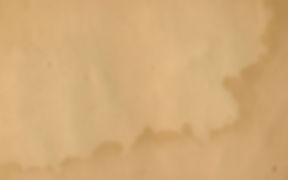
BLACK MOUNTAIN COMPLEX PETROGLYPHS
Recovering Indian history from ancient Native American rock writings.
Conjugation Rock
Motion and Movement:
In the graphic above, the arrows indicate the path the two fronts took as the battle progressed. The arrows demonstrate how motion and movement can be displayed in symbolic terms. The petroglyph on the right (above) demonstrates how the motion and movement of the battle was recorded long ago. Below, a breakdown and analysis of the motion and movement is translated into modern graphics:
The background has been removed so that only the petroglyph in question is visible. The yellow arrow was added to indicate the direction of the movement...toward the point.
In the graphic above, the symbols of the petroglyph have been translated into modern symbols which are more easily understood in the present day. The black dots represent defenders who have already been pushed off the mountain to their deaths; the small hash marks going over the edge of the rock face literally mean 'over-the-edge'. The small yellow arrow indicates the direction the defenders were pushed by the advancing enemy.
The red line indicates the advancing enemy; in the glyph, the three lines to the rear of the red line stipulate 'past tense'. Therefore, everything behind the red line is in the past; everything to the front of the red line is in the 'future'...so the yellow dots, representing live defenders, will be pushed off the mountain as the enemy/attackers advance toward the point. Again, a small yellow arrow indicates the direction in which the defenders will be pushed.
In the finial panel, as in modern outlines, the 'conclusion' literally tells how the Native American historical event came to an end...the remaining defenders, two small groups, were pushed or thrown off the center, right and left sides of the point at the end of the spur. The Right, Left and Center locations in the petroglyph correspond to manufactured 'notches', located at the positions indicated in the glyph, at Battle’s End atop the spur.
The record of this event is repeated thousands of times. In some cases the glyphs are very elaborate, such as Dictionary Rock, which suggests that the glyph contains minor details of the events that occurred. Other glyphs are smaller, or simpler, but convey the overall message of two groups defending themselves all the way up the mountain and being pushed off cliffs, but fighting to the last man, as one nation ... the Uto-Aztecans.






The purpose of this site is to inspire awareness, preservation and research of all rock art/writings. As the site grows and develops, it is hoped that YOU will help in these efforts by submitting questions, comments and suggestions: Our primary means of communication is the 'Contact' button above.
© 2023 by My site name. Proudly created with Wix.com